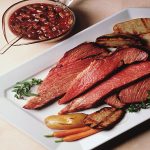
Though healthy eating is good for everyone, those who have genes that put them at high risk for obesity might benefit the most. A new study suggests that even those who carry an inherited predisposition to pack on excess pounds are not destined to become obese. In fact, researchers say it can be avoided over time by adopting a healthy diet rich in fruits and vegetables and unencumbered by salt, sugar, alcohol and red meat. The finding stems from a new analysis of diet, lifestyle and medical data on about 14,000 men and women that had been collected for two earlier studies. “We found that eating healthy foods — high intake of vegetable, fruits, whole grain, long-chain polyunsaturated fatty acids, and low intakes of trans fat, fried foods and sugary drinks — lowers the risk of obesity and promotes weight loss for all populations,” said study author Dr. Lu Qi. “Interestingly, the protective effects appear to be more evident among those at higher genetic risk,” he said. Qi serves as director of the Obesity Research Center at the Tulane University School of Public Health and Tropical Medicine, in New Orleans. The study was published Jan. 10 in The BMJ. Qi and his colleagues stressed that obesity risk is driven by a complex brew of genetic and environmental factors. Also, although DNA analyses can easily spot… read on >






































